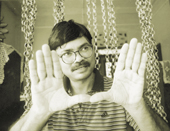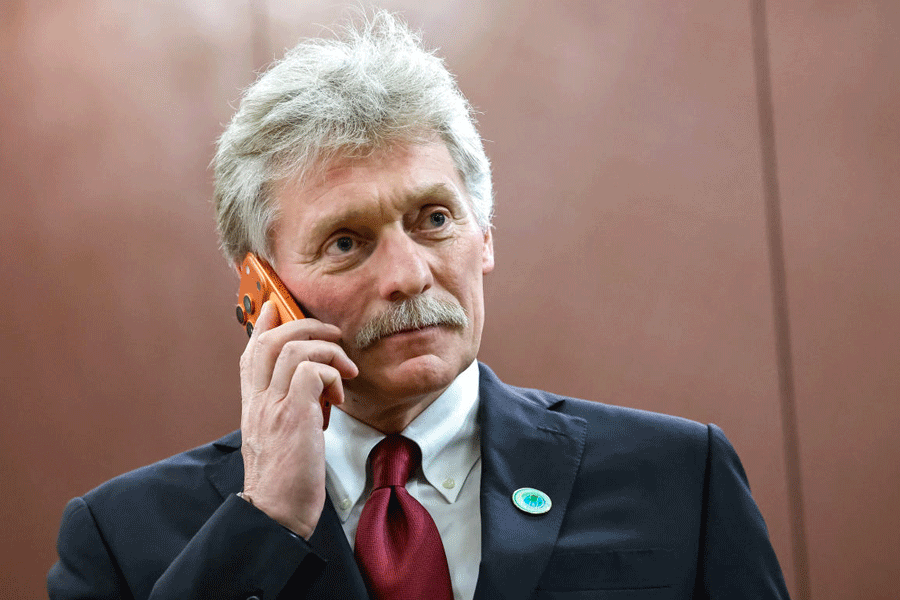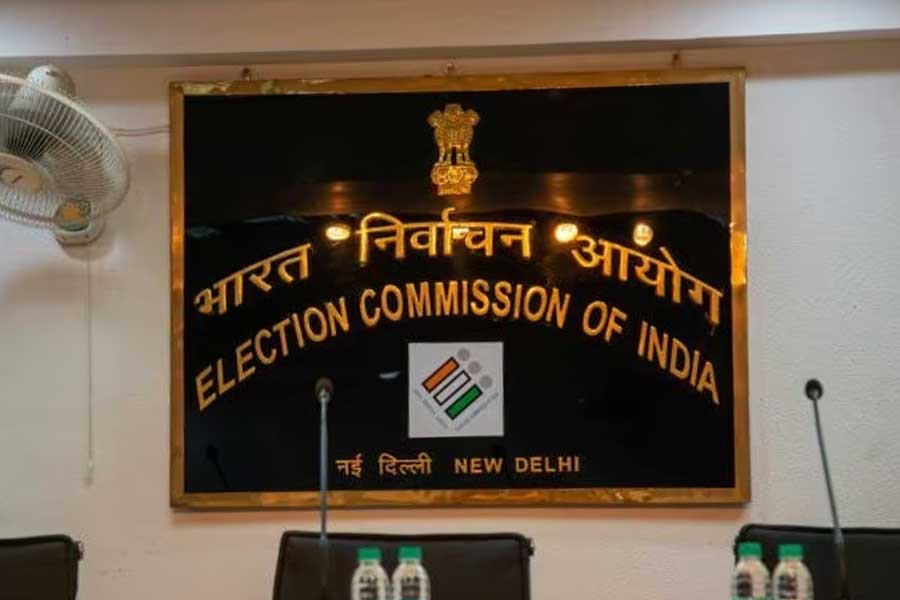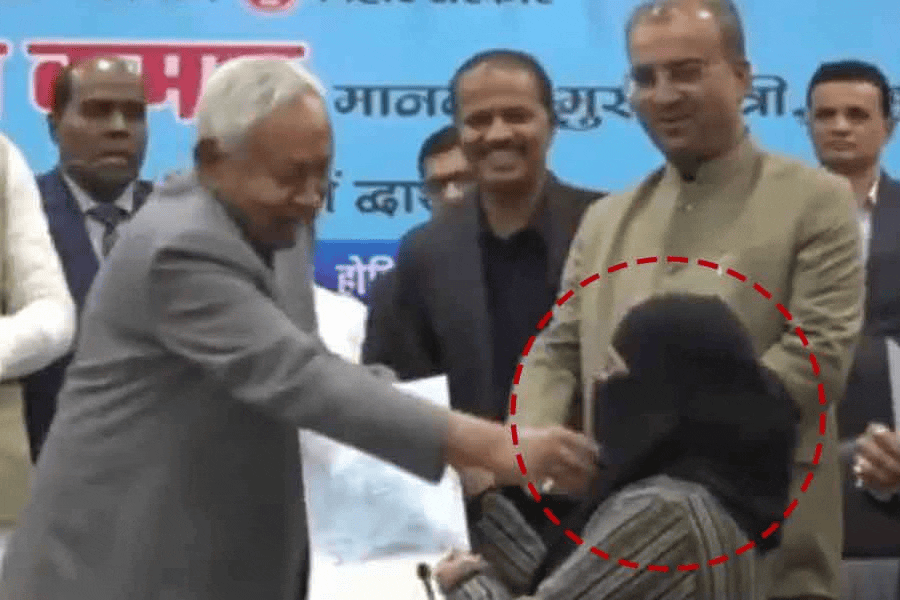 |
| With an aim to fulfil a friend’s dream of filmmaking, Mrinal Kanti Das not only took up cinematography but also went on to win a national award for it. Picture by S.H. Patgiri |
The camera zooms into the solitude and silence of the lush green wilderness of Assam. Behind the lens, to capture nature’s rich tapestry, is ace cinematographer Mrinal Kanti Das for his directorial debut in the genre of cinema, Aranyanat Borukhun.
“The concept of Aranyanat Borukhun as a film first evolved in my mind almost a year back and from day one I wanted to direct it on my own,” says the cinematographer-turned-director. As the title itself suggests, Aranyanat Borukhun is all about the jungles of the state. “Here the forest is the hero and all the human protagonists revolve around it,” he smiles. He adds: “I don’t want to reveal much about its storyline. Let the audience come to the theatre to see it for themselves.”
The team of the film has recently finished their location shooting in the dense forests of Kaziranga and Manas wildlife sanctuary. The director is confident about wrapping up the film by the end of this year. Aranyanat Borukhun is the first of its kind of Assamese film where wildlife heritage of the state will reach the audience in a popular format of a feature film. “Hopefully the film will sensitise the people and force them to think twice regarding their relationship with nature and its various elements,” he says.
This tall, bespectacled man, with ever-inquisitive eyes for life, had never thought of becoming a part of the film fraternity.
Born on October 30, 1965 in Guwahati, Das found great delight amid nature. “Whenever we got a chance, my friends and I loved to trek in the nearby suburbs of the city,” he recalls. “Maybe there I developed my interest for mountains and mountaineering is still a passion for me,” he adds. Das holds the record of being the first Indian to scale the peak of Menthosa in the Western Himalayas way back in 1986. Mountaineering and trekking took him to the mountains of west Sikkim and Nepal.
“Photography is another hobby that I nursed since my childhood and the landscapes in the textbooks bedazzled me,” he recollects. He says, “Good photography is what I appreciated and enjoyed clicking even as a boy but making a career out of it did not occur to me at that time.”
After completing graduation from Arya Vidyapith College, Das cleared the exams conducted by the Assam Public Service Commission for the department of forestry. After a rigorous training of two years, he was appointed assistant conservator of forests and worked in various district headquarters of the state.
During that time, an unexpected event shattered him. “A very dear friend of mine was killed in an accident. It was hard for me to digest the fact that he was no more with us,” he says. “My friend was someone who always used to talk about films and his dreams about new film projects. Even as a young man of 22, he worked as a film editor in Calcutta and we were sure of his success in the medium.”
The pain and the unrealised dreams of a dear one made him want to relive the dreams his friend had seen. “When nothing was left, I thought of fulfilling his dreams and decided to take the entrance test to the Film and Television Institute of India (FTII), Pune, in the department of cinematography. “Among 500 students from all over India, he topped. He left his home and job to take up his three-year training.
“FTII was a completely new environment for me. Every sense in which one generally perceives and looks at films as a medium of entertainment changed,” he reflects.
“Although I was an avid filmgoer, the different genres of films that I saw there flabbergasted me,” he adds.
“It was the place where films were never compared in the clichéd mould of art and commercial category. But from a war propaganda to a fast track film, all good and sensible movies are screened for the students.”
During his stint at FTII he worked as a cinematographer in an experimental film directed by the Parsi director, Harmuz. The film won a national award in the short film section. After passing out from FTII, he got a chance to work as an assistant for the renowned Bollywood cinematographer Binod Pradhan. “I went to Pune to hone my skills in film technology and coming back to Assam is a natural corollary for me,” he says.
“Of course, Mumbai offers one with a good working ground and money naturally flows in. But my aim was beyond moneymaking,” he says. Making good cinema in a place where filmmaking had never been a cultural wave drew this young FTII alumnus.
Immediately after settling in Guwahati Das worked for Deepak Sarma’s Unmekhon in 1992. “The film never saw the light of day but it was a great working experience,” says Das.
Mimangsha, directed by Sanjib Hazarika in 1994, went to various international film festivals from Montreal to Chicago. Along with the director, the cinematographer of the film, Das, stole the show.
In 1997, he received the national award for the best cinematographer for his brilliant camera work in Raag Birag by Bidyut Chakraborty and Adaijya by Santawana Bordoloi. “I was elated and at the same time astonished since it came in the early stage of my career and took the award as a proof of my hard work and blessings of all my well-wishers,” he recalls.
Thereafter, films like Boibhav by Manju Barua in 1999 and the Boro film Panoy Jonki in 2002, where he worked as a director of photography, got special mention from the jury of the National Award. Along with Manju Barua, his work was highly appreciated at the Dhaka Film Festival.
Then came a spate of commercial films like Hiya Diya Niya to Gun Gun Gaane Gaane. “I am lucky to be appreciated by both the classes and masses but working in a good movie is my ultimate aim,” he says.
He had also worked for Basu Chatterjee in 1998 for Haathat Bristi.
Last year, he was selected as a jury member of the national award. “Assamese film industry can learn a lot, specially from Tollywood and Bollywood and I am sure we can also come up with such sensible films in Assam.”
Television is a medium where he finds immense scope to experiment with his artistic skills, both as a director and a cinematographer.
In 1994, he directed and videographed a 13-episode teleserial Rudaali. He has also worked in many a Doordarshan-commissioned documentary both as a director and videographer.










